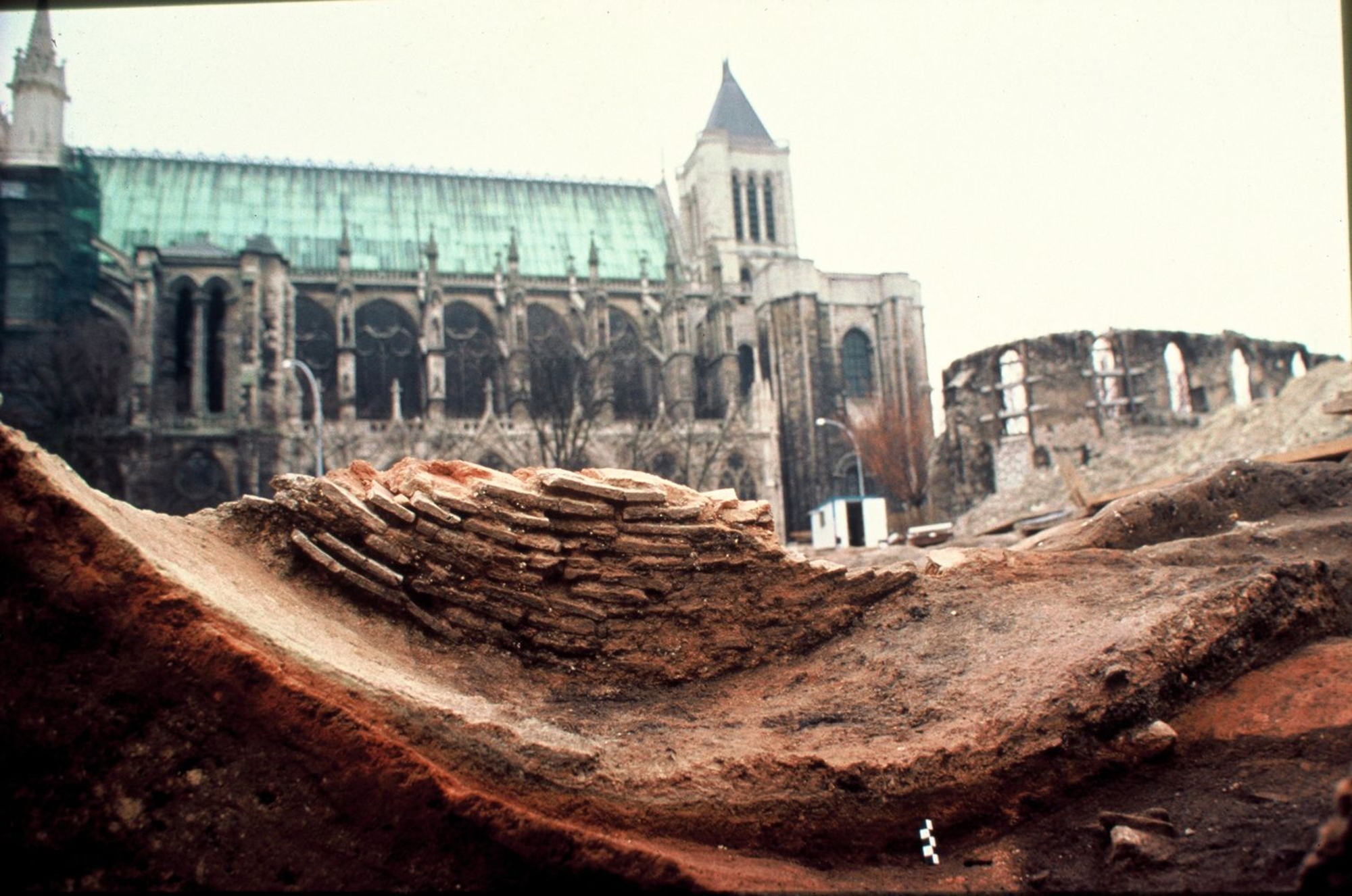- Home
- Archaeology, territory and citizenship
- Archaeology and urban policy
- The Pierre de Montreuil garden, an archaeological reserve
Development of the area adjoining the Saint-Denis basilica by Benjamin Mouton, senior architect with the Monuments Historiques.
© Agence Benjamin Mouton.
The creation of the Pierre-de-Montreuil garden in 1998 was a delicate affair. This is because it involved the development of the northern outskirts of the basilica1, which was a burial area from the Merovingian era up to time of the French Revolution. Skeletons from the abbey's main cemetery even appeared in certain zones. An archaeological diagnosis allowed archaeologists to estimate the depth of the various burial phases and to map out "sterile" zones (which had already been excavated in the nineteenth and twentieth centuries).
The Pierre-de-Montreuil garden seen from the top of the basilica.
© Monuments Nationaux.
With the results of this study in hand, the Regional Archaeological Unit recommended that the ground beneath the garden be treated as an archaeological reserve. Working with the Archaeological Unit, Benjamin Mouton, senior architect with the Monuments Historiques, used the sterile zones for flower beds, watering systems, lighting and drainage areas, and protected the burial area with a thick layer of humus. In addition, making use of archaeological data, he used patterns of plants and stones to reveal the circular layout of the Valois mausoleum and the three churches that were part of the monumental complex.


